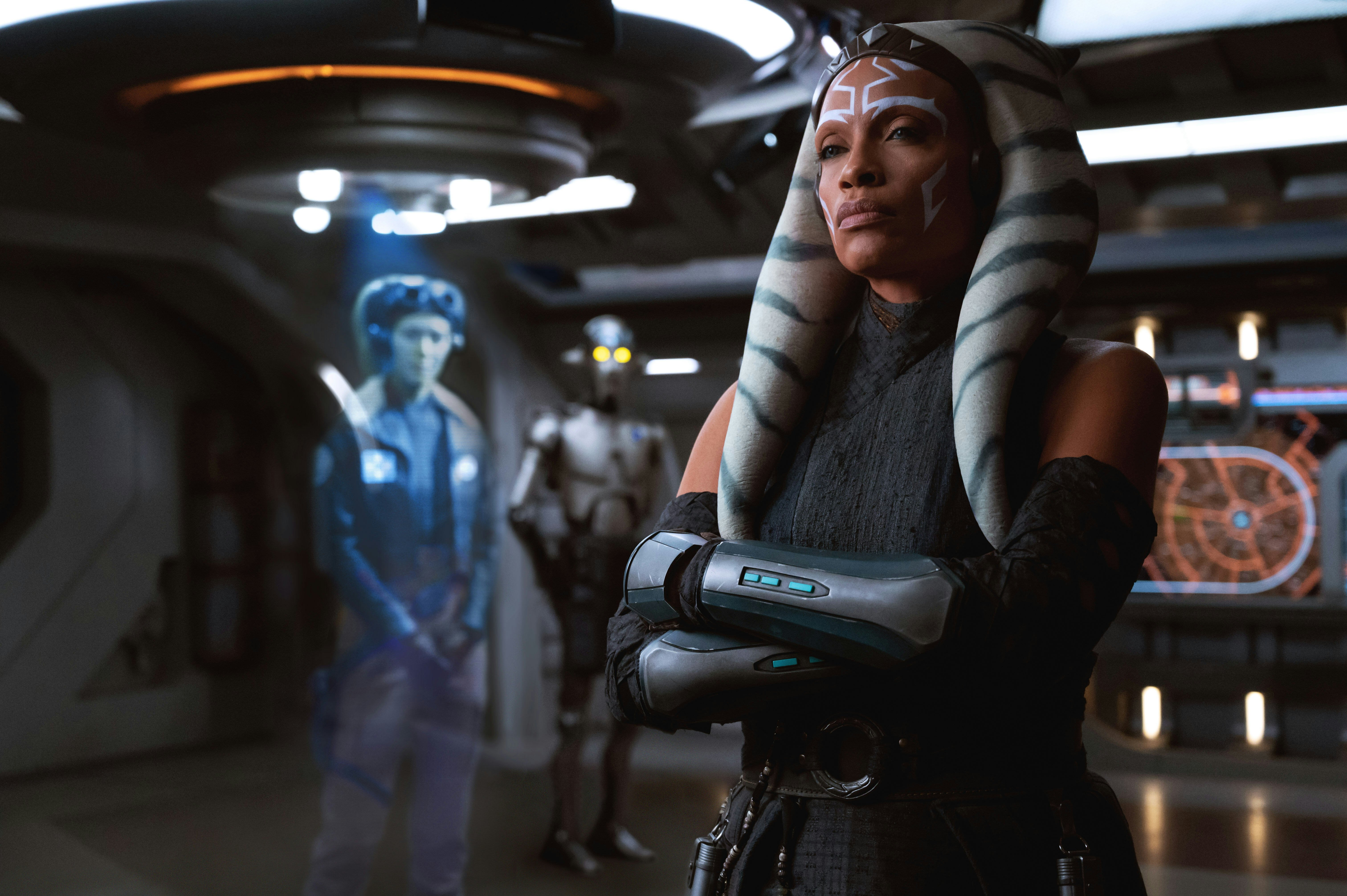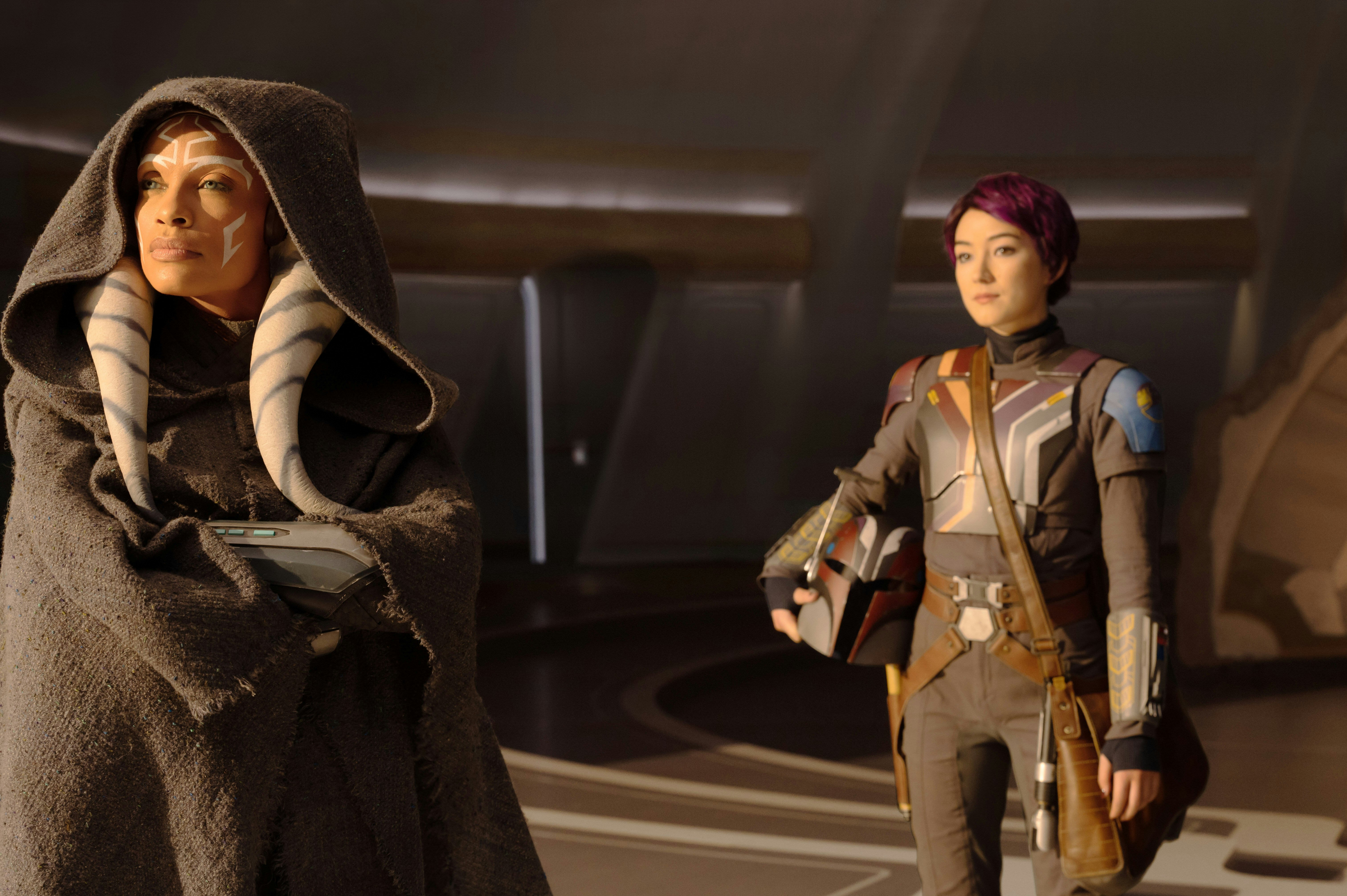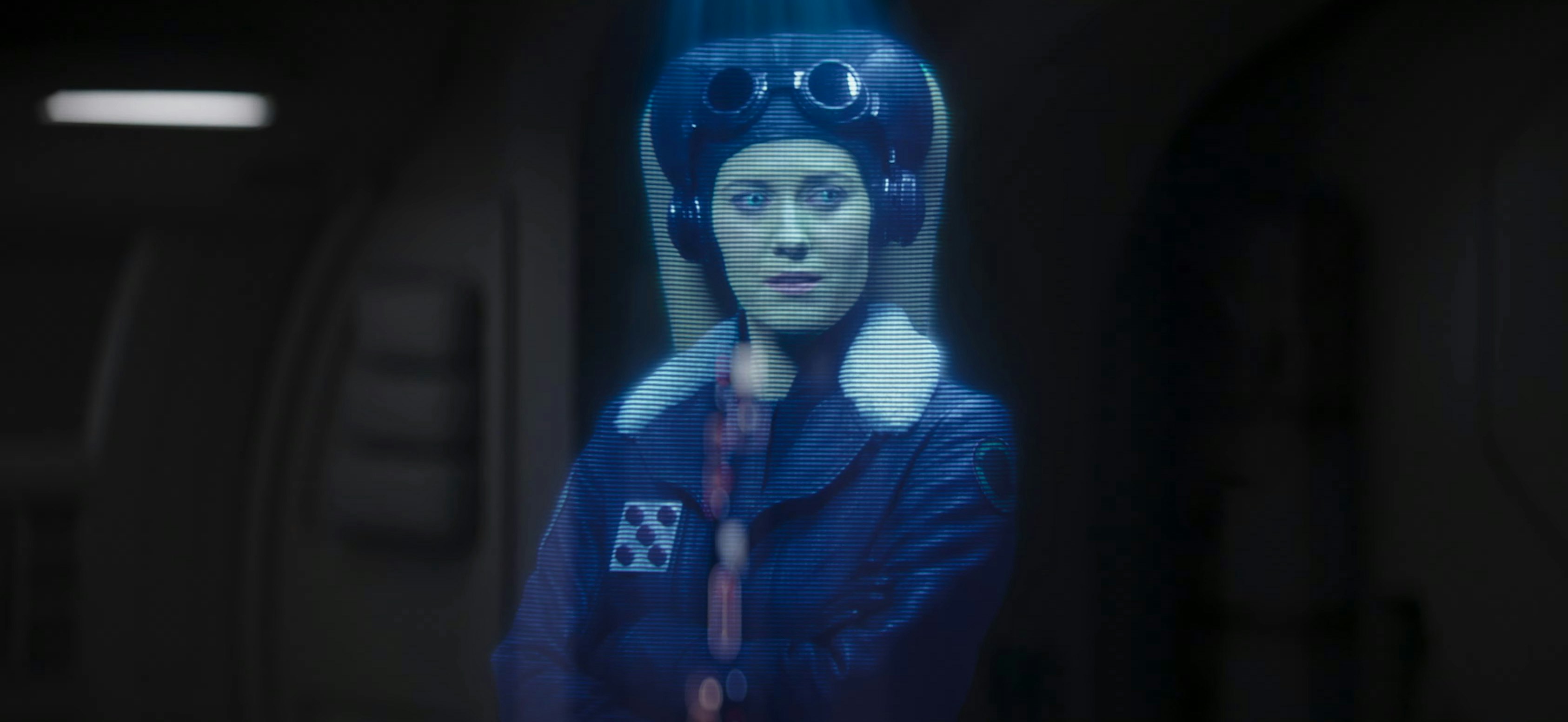
Who is Ahsoka actually for? It’s a question that’s plagued the newest Lucasfilm series from its inception. While it’s technically a spinoff of The Mandalorian, it’s also a clever way of bringing showrunner Dave Filoni’s most beloved animated characters into live-action. In addition to Ahsoka Tano (who was first introduced in Star Wars: The Clone Wars), Ahsoka will also bring characters from Star Wars: Rebels into the fold. As exciting and unprecedented as that is, it’s always felt like a misstep — not just for hardcore Rebels lovers, but for the fans who’ve never seen a single episode of the animated series.
Ahsoka finds itself in a precarious balancing act as a result. It’s clear what the new series wants to be: an homage to one of Star Wars’ most underrated eras, but also an entry point for casual audiences. And for the most part, Filoni and co. do manage to navigate this tricky tightrope. It helps that, in the premiere, much time has passed since we last saw Ahsoka Tano, Sabine Wren, and Hera Syndulla. That’s what gives Ahsoka the liberty to rewrite these characters anew. The problem is, they each feel like slightly different characters. Their new personalities are too distant for Rebels fans to fully recognize, but their well-established dynamics make it hard for any newcomers to really get invested.
Exposition is the thing holding Ahsoka together thus far. Its two-episode premiere is rife with weighty allusions to past battles, bygone relationships, and broken promises. While it’s a fitting dynamic for these characters that are each stuck in the past, Filoni still wants to show us that they’ve changed, that they’ve grown. That puts Ahsoka in a frustrating clash between events that have already happened off-screen, and the momentum that it borrows from Rebels and The Mandalorian. Whether you’re pro-Ahsoka or against, a lover of animation or a total novice, that’s just plain confusing — not to mention frustrating.

Sabine’s tenuous partnership with Ahsoka is just one of the many new developments we’re informed about, not shown. Ahsoka suggests that, some time after the events of Rebels, the eponymous ex-Jedi took Sabine on as a padawan. While their clashing temperaments — and Sabine’s lack of Force sensitivity — eventually doomed this partnership, our reluctant master and apprentice are told to give it another go. (The importance of their reunion is impressed by Hera and Ahsoka’s trusty droid, Huyang, throughout Ahsoka’s first two episodes.)
Key moments from Rebels have also been tweaked, ever so slightly, to accommodate a new audience. Hera seems to think that Grand Admiral Thrawn perished during the Battle of Lothal — an assumption that could have clued audiences in to her history with the missing villain, if it didn’t go against everything Rebels already established. It’s just one small moment in the larger continuity, but it’s hard not to nitpick when so much emphasis has already been placed on Ahsoka’s role in a growing, interconnected universe — one that relies on seamless continuity no matter the medium.

Ahsoka may be more entertaining for audiences who haven’t tuned into the animated shows for this reason. Diehard fans will have to fight against their preconceived notions of the Rebels cast in order to grasp their evolution in the new series. And while there’s nothing wrong with wanting to challenge your audience (especially where the Star Wars fandom is concerned), Ahsoka is much too scared to rock the boat. Newcomers may not feel completely satisfied with the series either, even after catching up on the lore.
No matter how you slice it, audiences will walk away with more questions than Ahsoka seems willing to answer. There’s still a chance for the series to pull off its balancing act, but it may not be able to juggle its disparate fandoms for much longer.







